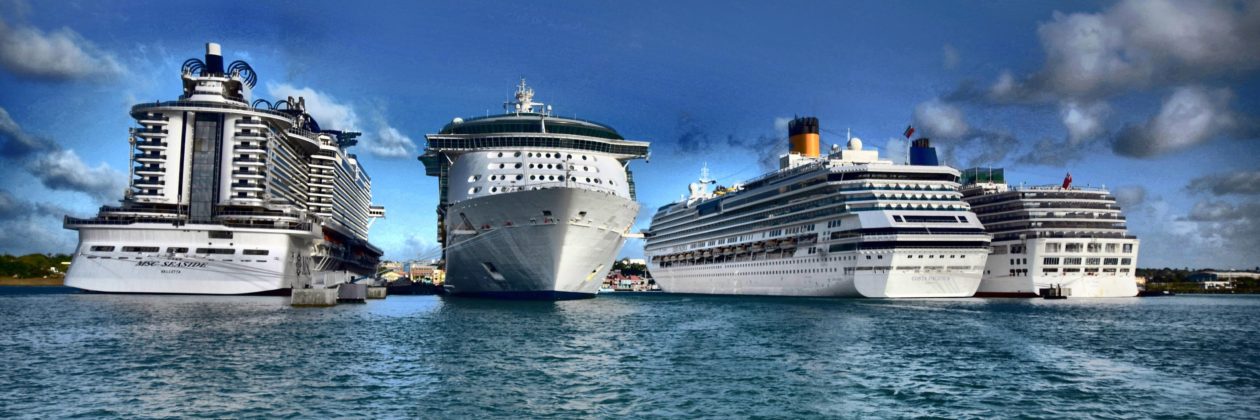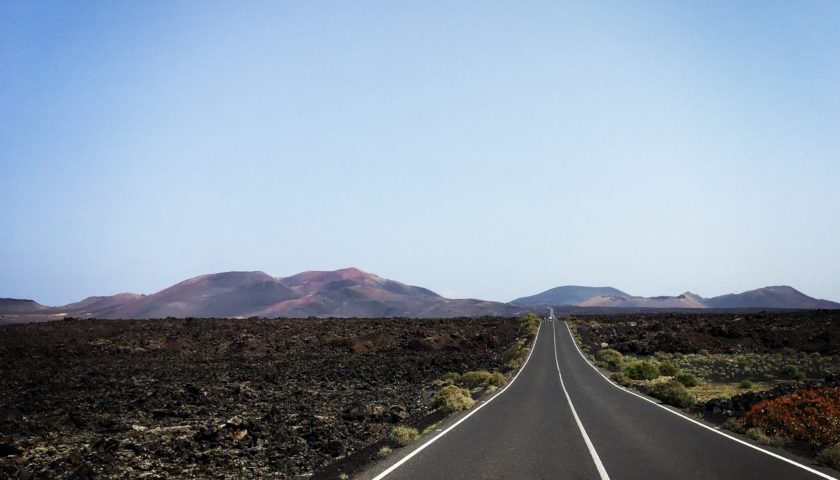This is a guest post about Lanzarote by Sam Whiteside, Port Presenter with P&O Cruises. You can find out more about Sam at the end of this article.
I seem to be on a one man cruise ship mission to convince people that Lanzarote is actually one of the most diverse and interesting touristic destinations in Europe. In actual fact, a friend of mine who lives on the island told me that next to Tenerife and Gran Canaria, it is the third most important island of the Canaries when it comes to tourism. He did however caveat that with saying it is an island you either love or you hate.
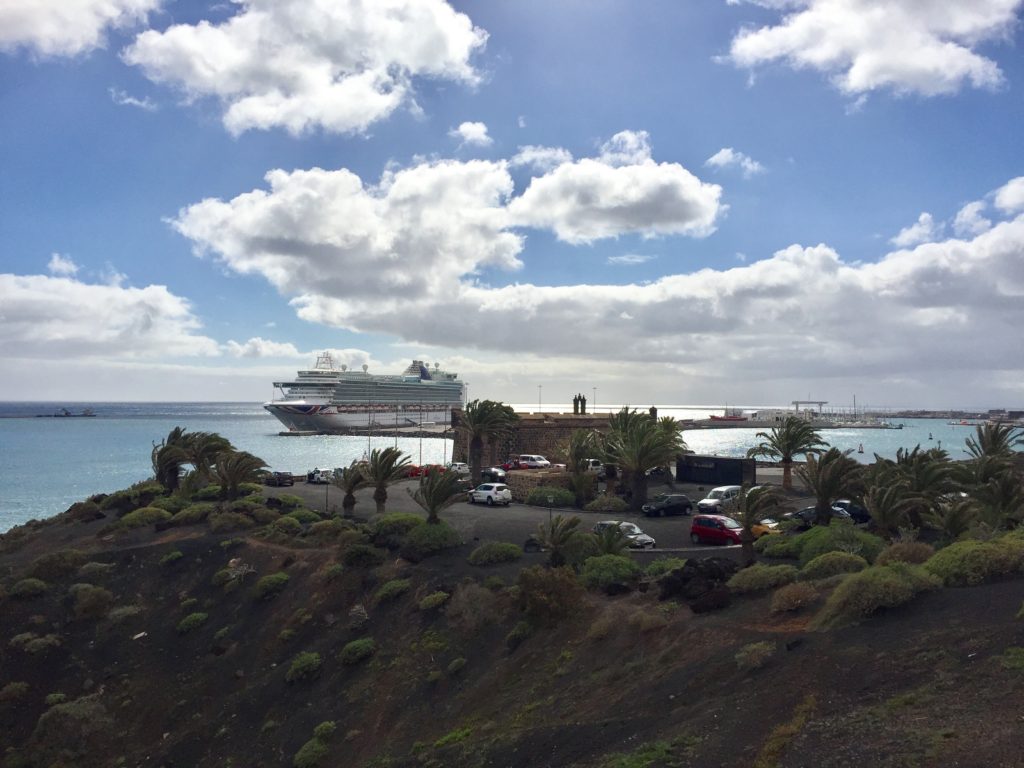
To me, this island is actually a tourists dream with contrasting scenery, wonderful art and architecture, great resorts and stunning beaches. It also has a relaxed attitude that you cannot always find on the larger two Canary Islands. If you are a cruise passenger, I suggest you head away from the capital and port of Arrecife to truly discover the island. Otherwise the term ‘Lanzagrote’ will definitely remain imprinted on your memory.
-
Timanfaya National Park
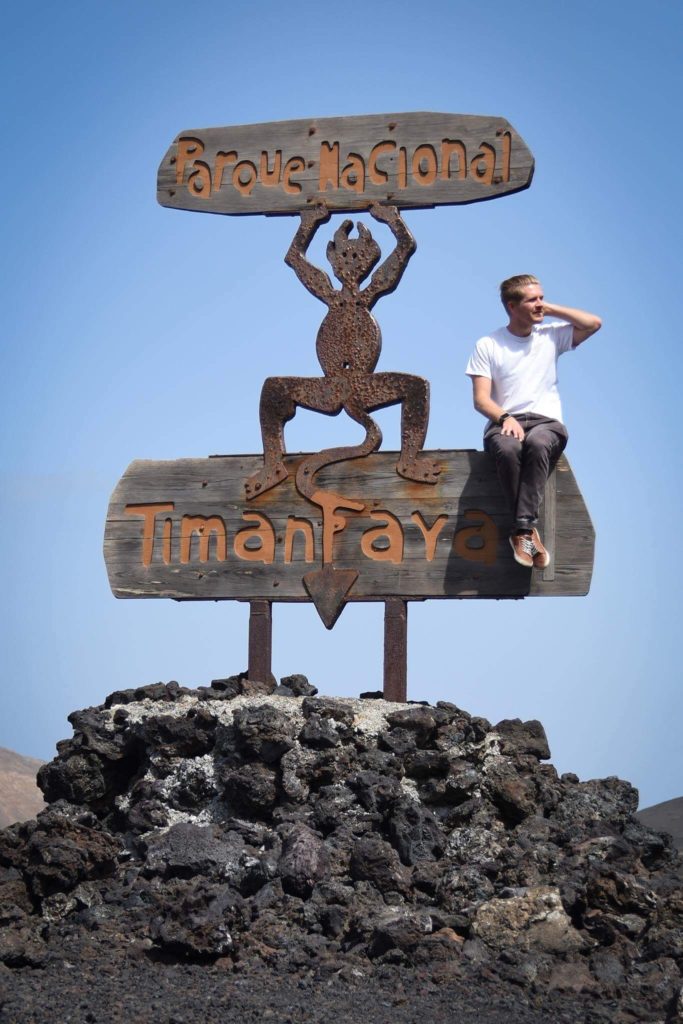
Lanzarote’s biggest attraction is its landscape. It boasts a sparse and barren volcanic landscape that appears otherworldly. This island is home to Las Montañas del Fuego, or the Fire Mountains of Timanfaya National Park. The national park occupies an area of approximately 51 square kilometers along the western coast of the island, and is named after 1 of 11 settlements buried during a 6 year long volcanic eruption, lasting 2053 days from 1730-1736. This period of consistent volcanic activity produced 32 new volcanoes in a stretch of 18 square kilometers.
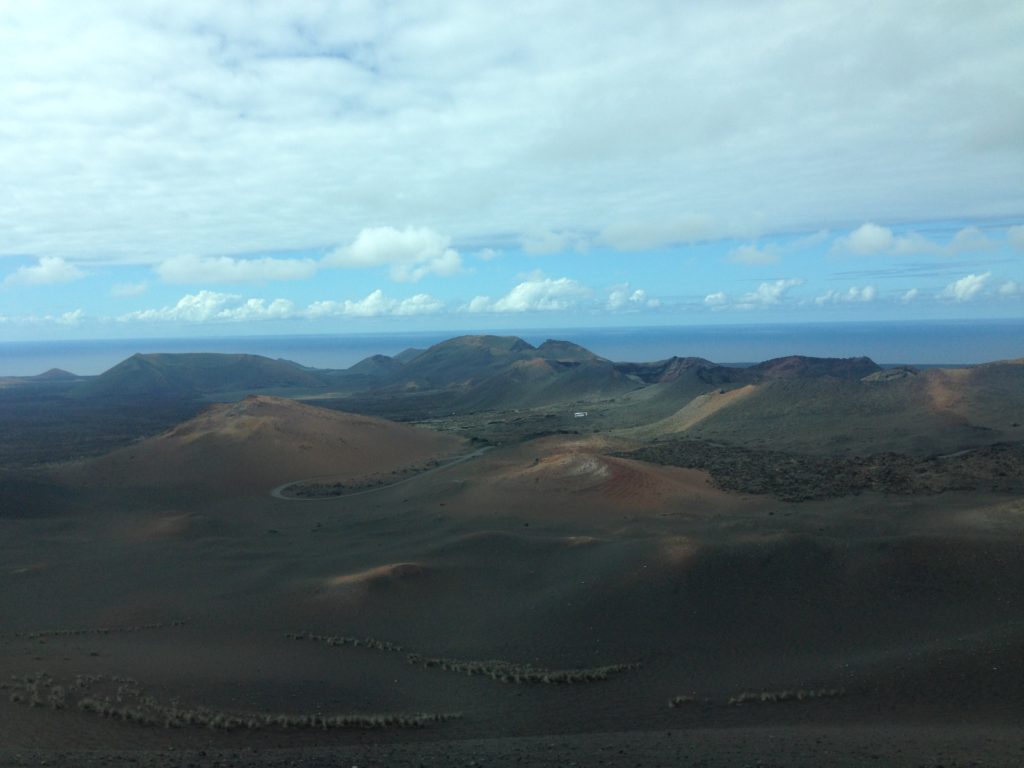
The park holds more than 100 volcanic craters, all surrounded by black lava fields. The combination of blacks, oranges and reds make them a stunning sight to behold. You can understand why the indigenous population named the island Tyterogaka or Tytheroygaka, which may mean ‘one that is all ochre’. Whilst volcanic activity has not been experienced on the island for centuries, this area is still active, and the full impact of how alive the volcanoes are can be witnessed when you visit the national park.
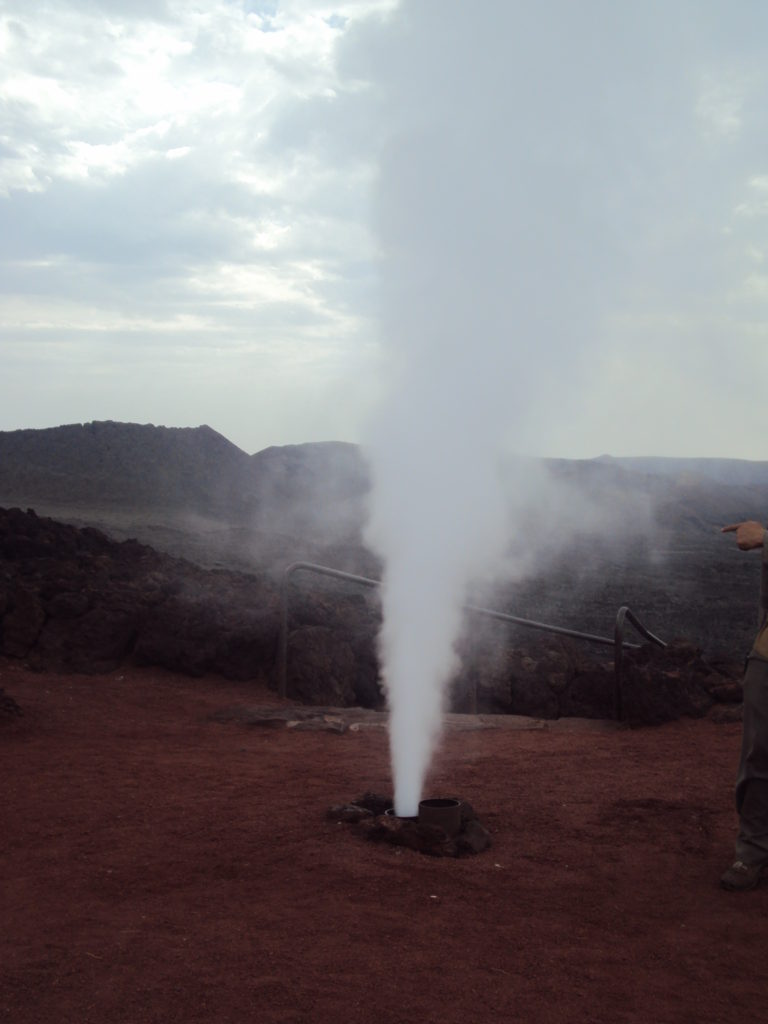
When visiting this attraction, either independently in a rental car or taxi, or on an organised excursion, you will be treated to a bus ride through the changing colours and contours of Timanfaya. There is also a visitor centre where you start your bus journey into the park, allowing you to admire the western coast where the volcanic cones and craters appear at various intervals across the land. Once at the visitor centre you will witness a fantastic spectacle showing you how hot the ground is, just 6ft below as a bush is set on fire almost instantaneously. You will also see the violent forces of nature at work as water is poured down a hole in the ground only to re-appear seconds later as plumes of hot steam, shooting out into the air. This area can be quite windy, so a light jacket is always useful. The ground can also be a bit uneven in places and it’s volcanic gravel.
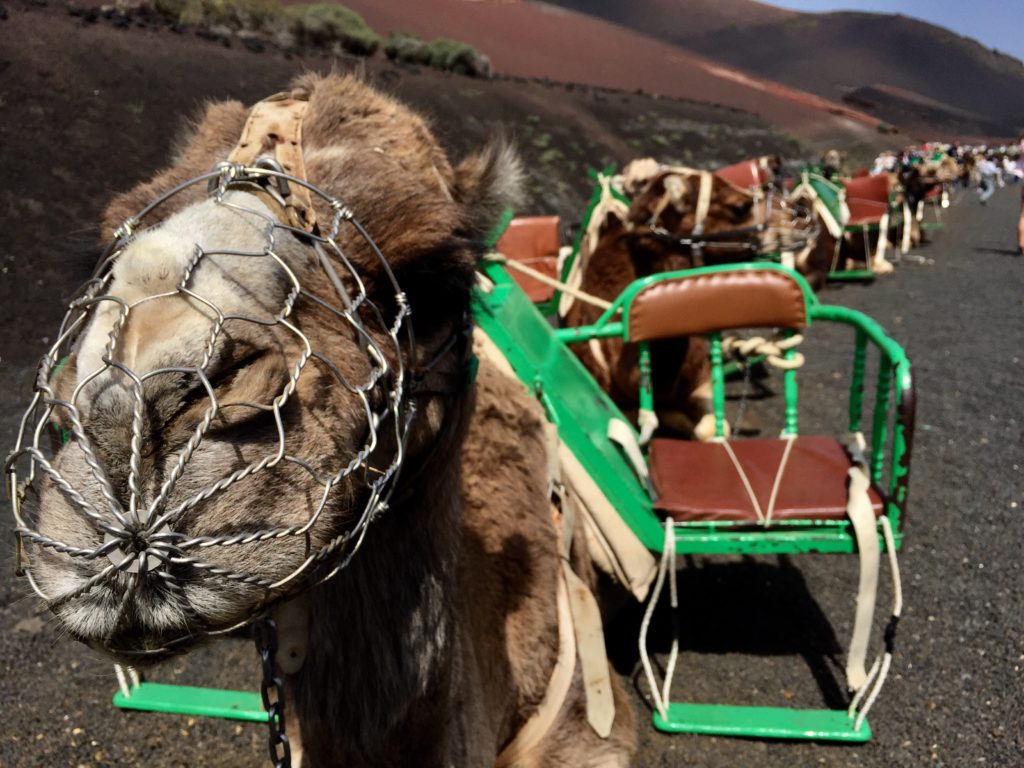
You can opt for a camel ride across the volcanic landscape just before the main entrance to the national park. The Timanfaya National Park is open from 9AM-5:45PM and priced at €9 per adult and €4.50 per child; camel rides are an additional €12 per camel which take two persons seated either side in bucket seats.
2. The Cesar Manrique Foundation
Lanzarote owes a lot to quite possibly its most famous and successful native, the artist and architect Cesar Manrique. Manrique was born in Arrecife in 1919, attending the University of La Laguna on neighbouring island Tenerife before moving to Madrid and attending the Art of School of San Fernando in 1945 under a scholarship. He graduated as a teacher of art and painting before moving to New York City where he lived between 1964 to 1966, displaying his art at the prestigious Catherine Viviano gallery with assistance financially from Nelson Rockefeller in the form of a grant.
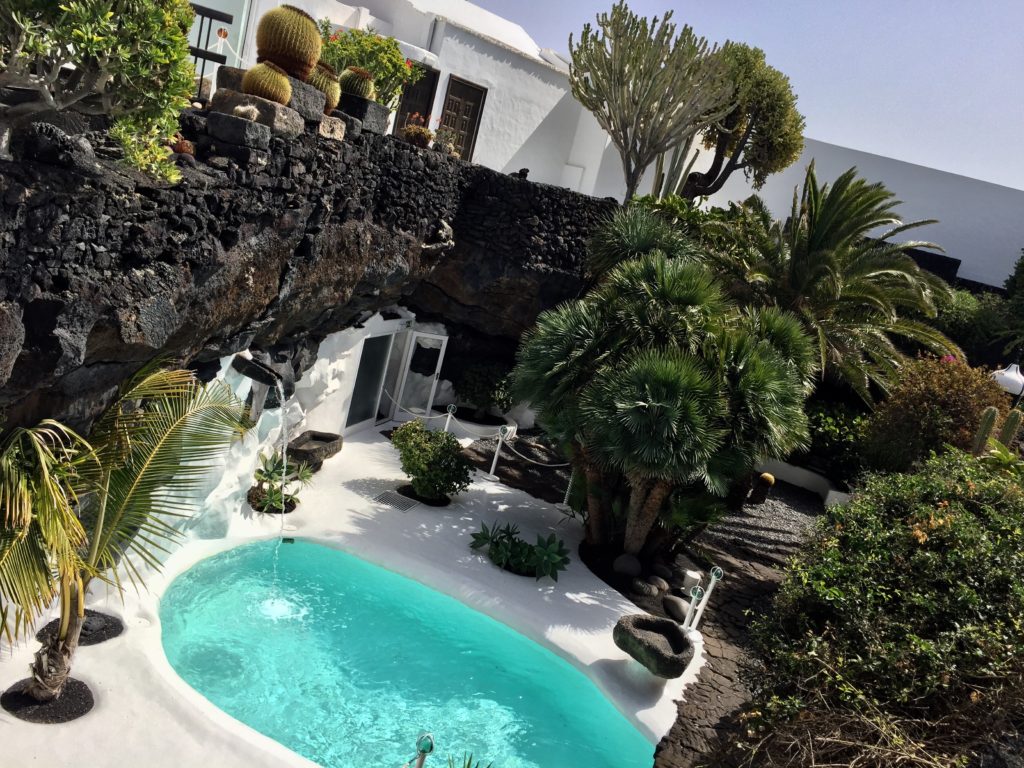
Manrique moved back to Lanzarote in 1966 and had a major influence on the development of the tourism industry on the island. Witnessing the explosion of high-rise hotels and resorts on neighbouring islands and mainland Spain, he successfully lobbied to encourage the island government to have a sympathetic approach to tourism. This is why you will not find high rise hotels or resorts on the island, bar the Gran Hotel and Spa in Arrecife, built before Manrique had been able to implement his artistic license on the island. Manrique sadly died in a car accident close to his home in 1992, now the location of his foundation. It was opened after his death by his friends, allowing tourists access to his home.
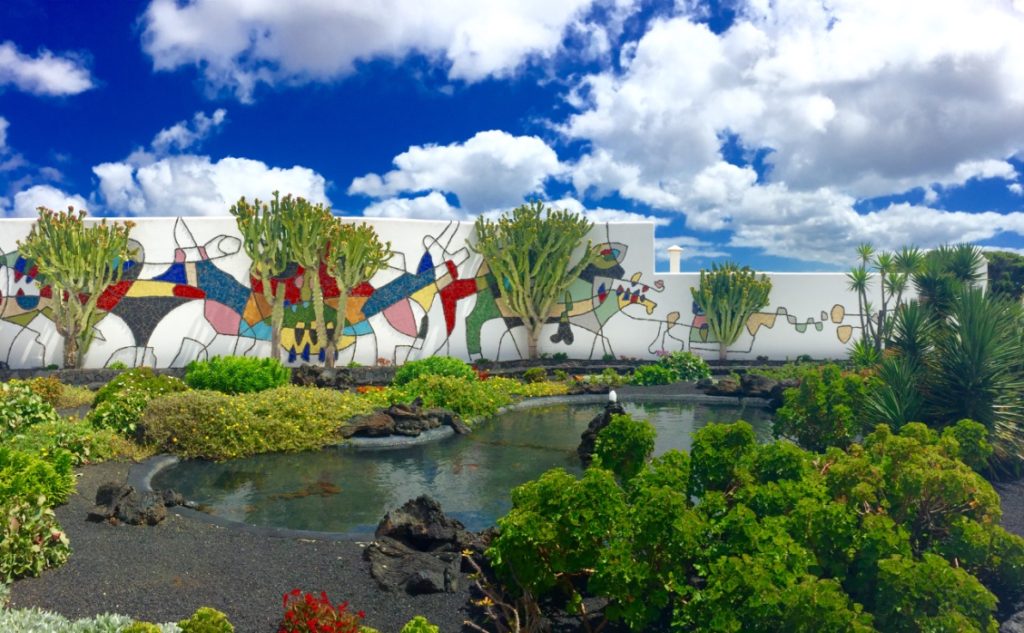
Manrique’s house was his first piece of work on the island and highlighted his belief in blending the organic nature of the island with his own unique style of art. He discovered his now famous bubble rooms walking the lava fields of Tahiche, finding a tip of a fig tree growing from one of the 5 large bubbles that had been created within the ancient flow. By the end of 1968 the 5 bubbles had been connected underground and it provided Manrique with the perfect display space on the island to showcase his vision of an ecological approach to the development of the island and its tourism.
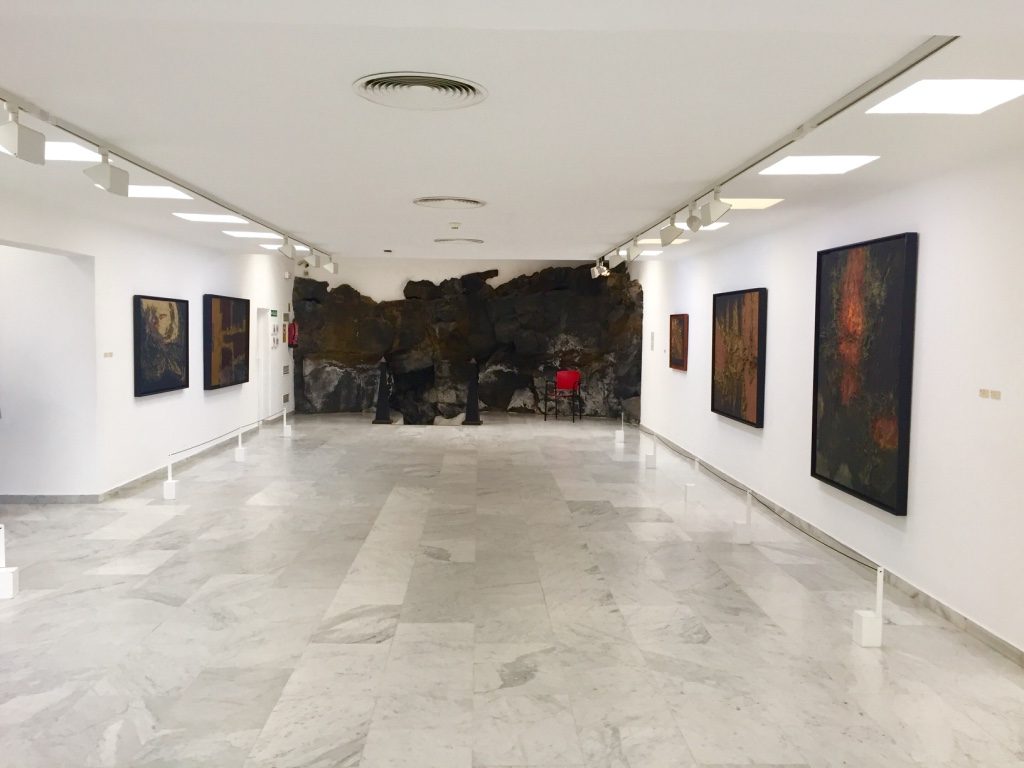
When entering the first large room you find a considerable modern art collection of Picasso and Miro and other renowned artists, most of whom were contemporaries of Manrique before descending down into the bubble rooms, with a very easy natural flow throughout the property. You also have the private sunken garden below the lava flow with its pool area, shimmering against the white walls of this intimate space. In the outside area once you have finished the walk around the property, you come to the large manicured garden with a wonderful mural made of mosaics in the form of bulls. This is also where you will find a small café and a souvenir shop selling items inspired by Canarian art and by Manrique. The Foundation is open daily from 10AM-6PM, priced at €8 per person. You can access the Foundation on the island buses (bus number 9).
3. Jameos del Agua
Being a volcanic island, there are several geological formations that have been utilised for modern purposes as venues and tourist attractions, usually under the guidance of famed architect Cesar Manrique. One of Manrique’s most intriguing works is the Jameos del Agua, part of the Atlantida volcanic cave system. It was formed by the eruptions of the Corona volcano, about 3 to 4 thousand years ago; molten lava flowed down to the Atlantic and as this lava hardened on the surface, it created tunnels where lava could continue to flow down under the Atlantic, forming a tunnel that is approximately 6km long. The word Jameo is used to describe the openings in this tunnel that were created when the roof collapsed under the pressure created from volcanic gases.
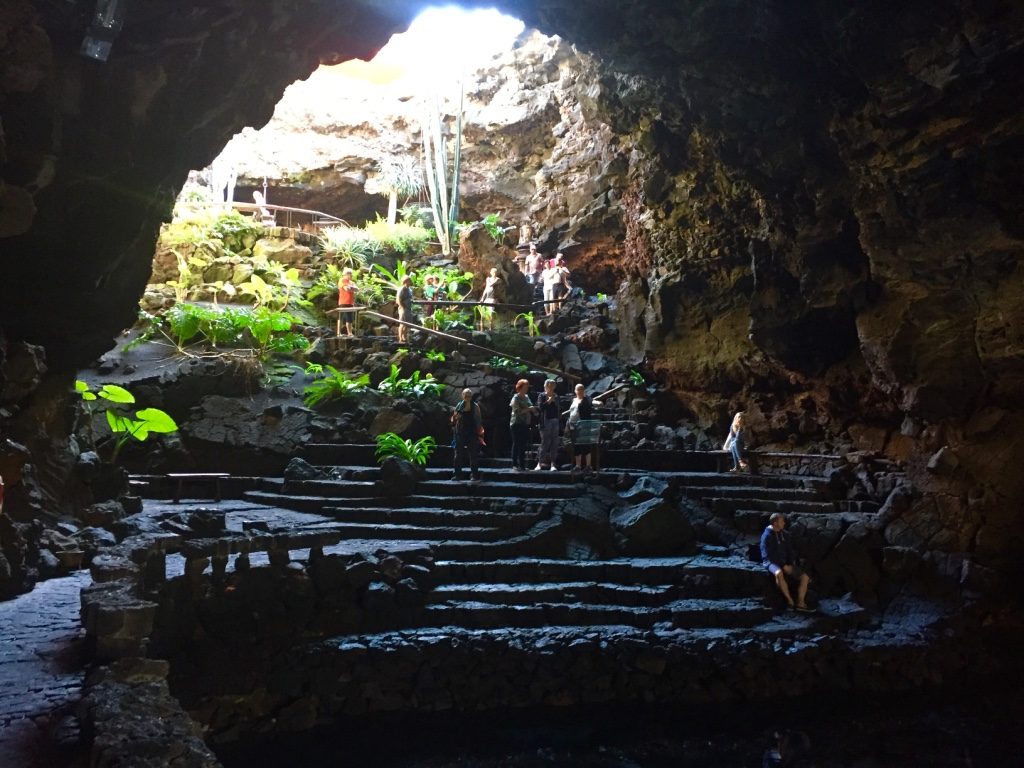
Manrique created the Jameos del Agua in the 1960s and you walk down several staircases formed of volcanic rock into Jameos that have various functions. The first is an unusual café/bar area. The second is part of the volcanic tunnel that houses a small lagoon where you can find the only place in the world that has white albino crabs. Then you head up into the sunlight and the largest Jameo, where the tunnel walls rise up around a beautiful palmed tree fringed swimming pool, reserved only for the king of Spain. There is also a concert auditorium built into a section of the volcanic tunnel. Above the last Jameo is the Casa de Los Volcanes (House of the Volcanoes), where there are various exhibits about the volcanic activity on Lanzarote and also global volcanoes. Jameos del Agua is accessible on island bus number 9 and is approximately 30 minutes drive from the port of Arrecife. It is open from 10AM-6:30PM, with extended opening hours on Tuesdays and Saturdays until 12:30AM. Entrance is €9 per adult and €4.50 per child ages 7-12.
4. Jardin de Cactus
Manrique’s skill has not just been reserved for the construction of properties, but also in the promotion of typical Canarian agriculture and botany. Utilising a run down rofera (the name given to a quarry where the volcanic rock is extracted to be utilised in agriculture) Manrique created his own interpretation of a cactus garden, with around 4,500 species from the 5 continents. From the large sculpture of a cactus plant outside, you enter through the volcanic wall which hides the wondrous site of a natural coliseum of plants spread out over various terraces.
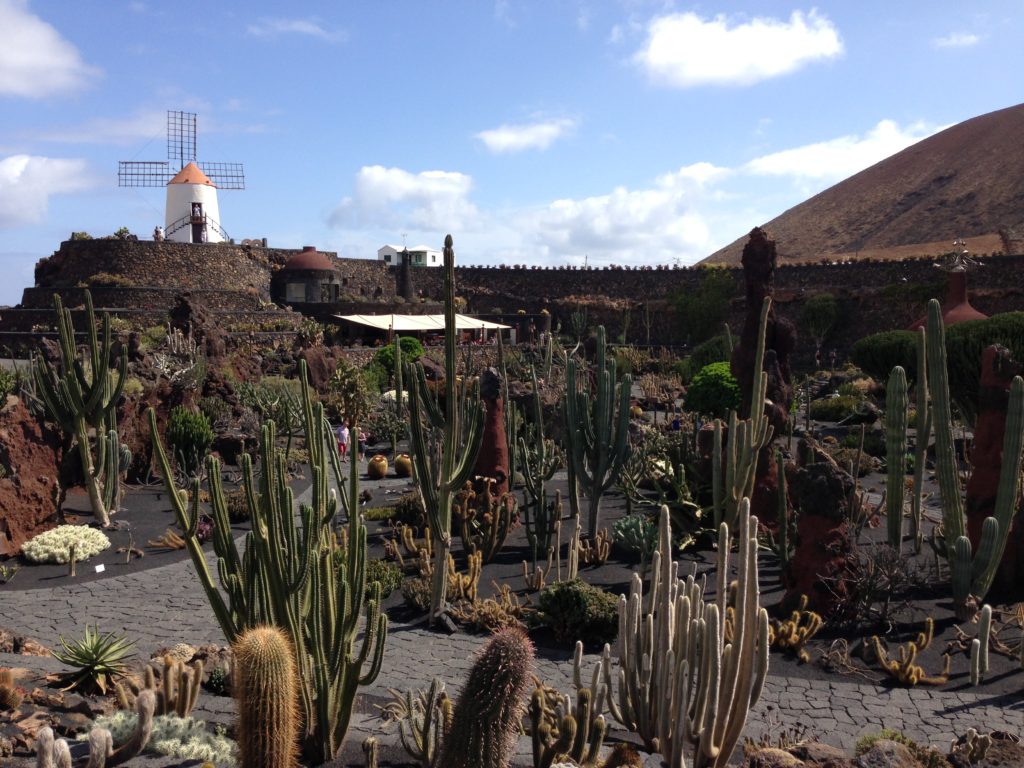
You may not think a cactus garden would be so interesting, and I myself was sceptical at first, but it is a truly beautiful sight. There are black volcanic stone pathways, walls and gravel contrast with the bright greens of the various plants and there is a wonderful traditional windmill at the highest point of the garden. This was the last of Manrique’s works on the island and it is a very special place to spend some time. Jardin de Cactus is open daily from 10AM-5:45PM, priced at €5.50 per adult and €2.75 per child ages 7-12. It is accessible by island bus on route number 9, approximately 20-30 minutes from Arrecife.
5. Puerto del Carmen
Whilst we have looked at some unusual touristic highlights, if you still want to take a stroll along a beachfront packed with bars, restaurants and shops, then you need to head to the bustling resort town of Puerto del Carmen. Most of the island’s annual visitors choose Puerto del Carmen as their holiday destination and it is fully geared up to tourism, whereas Arrecife is lacking in some of these elements. The Avenida de las Playas extends along the coast for 7km with many bars and restaurants on one side and the sea and beaches on the other. It is also only a short distance from the port at Arrecife, approximately 25 minutes transfer time and only €20 per taxi one way for up to 4 people, which is fairly cost effective vs. ship transfer tours. You can also take public transport from Arrecife on bus number 3, which usually runs every 20 minutes or so. If you want the best mixture of touristic elements then it is better to head to Puerto del Carmen, as opposed to staying around the port area.
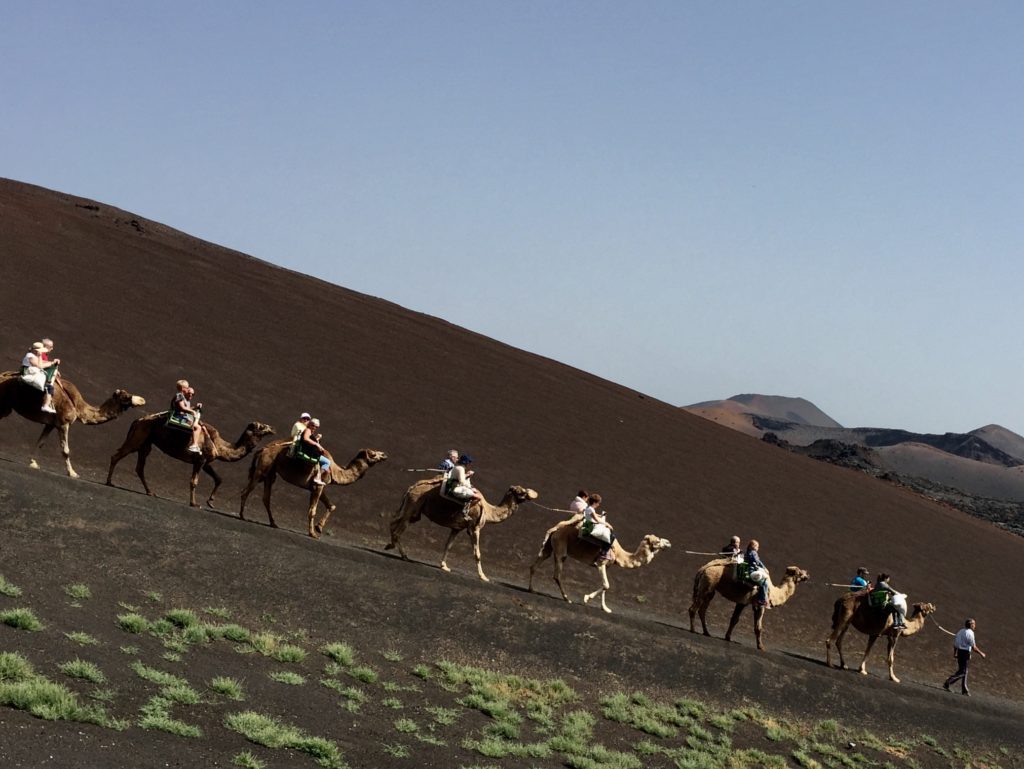
This is definitely Manrique’s Island and, for me, the main places to see are the attractions that Manrique took part in developing. Whilst I have only focused on 3 of these, there are several others that fall under a cultural banner on the island (the Centros de Arte, Cultura y Turismo). A special tourist voucher for several of Manrique’s attractions is available.
I hope this has helped demonstrate that the nickname Lanzagrote is actually unfair. Once you scratch beneath the surface, quite literally in most cases, you uncover something special and truly unique.
About Sam
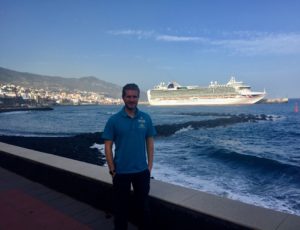 Sam Whiteside grew up by the seaside in Lowestoft, Suffolk but ended up working at sea by chance after a discussion at university with a professor. Having spent his entire ship career in the Shore Excursions department, Sam is currently a Port Presenter with P&O Cruises where he has been for 5 years. He has worked on all the ships in the current fleet.
Sam Whiteside grew up by the seaside in Lowestoft, Suffolk but ended up working at sea by chance after a discussion at university with a professor. Having spent his entire ship career in the Shore Excursions department, Sam is currently a Port Presenter with P&O Cruises where he has been for 5 years. He has worked on all the ships in the current fleet.
Sam loves getting out and exploring all the destinations that he visits on cruises and is always excited to try new things and expand his knowledge of the ports. He has recently invested in a new passion of amateur photography, which is great in his job because he has the perfect material to work with on a daily basis. Sam doesn’t have a favourite destination. He finds they all have something special about them, but destinations he enjoys visiting regularly include the Baltic and the Central Mediterranean.
You can follow Sam’s travels on Instagram at iamsailorsam.
Follow me on social media

